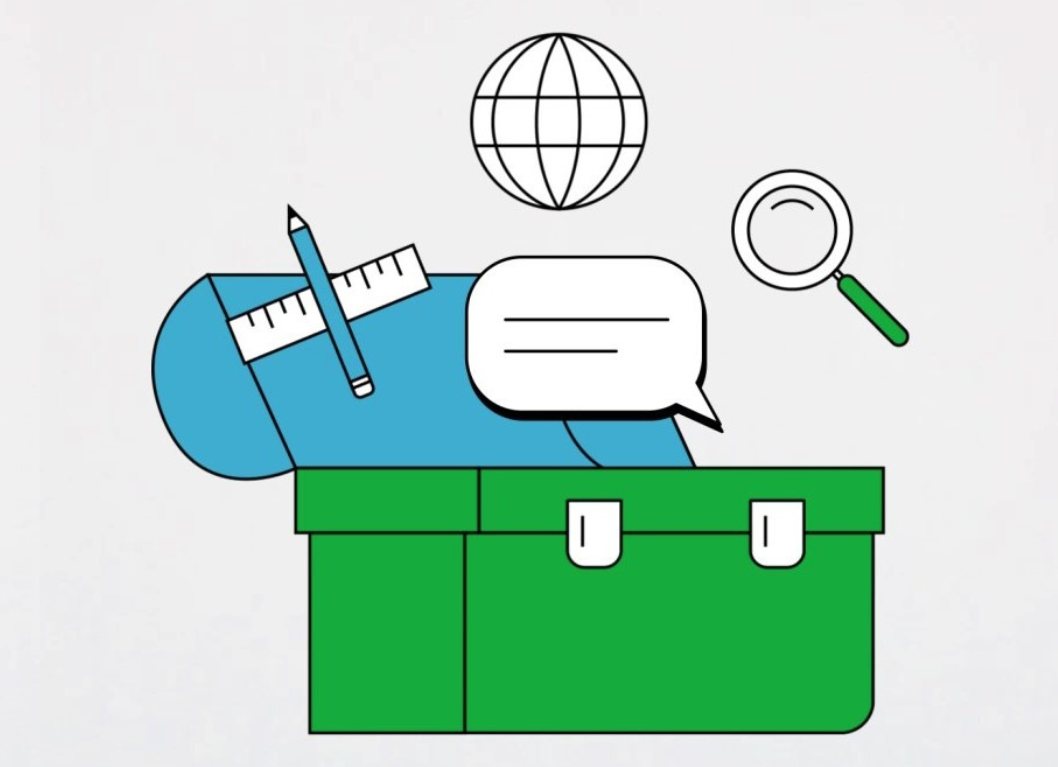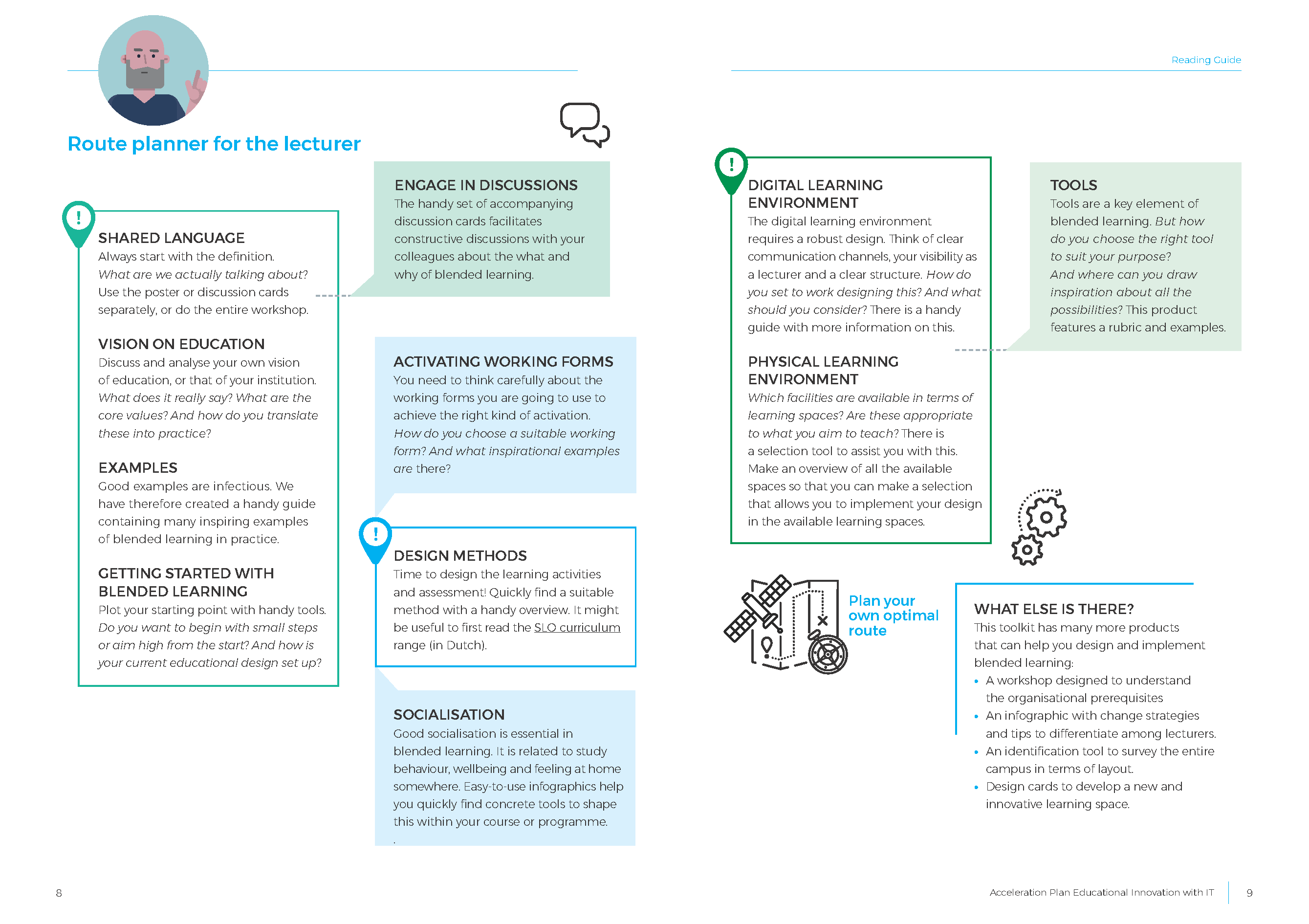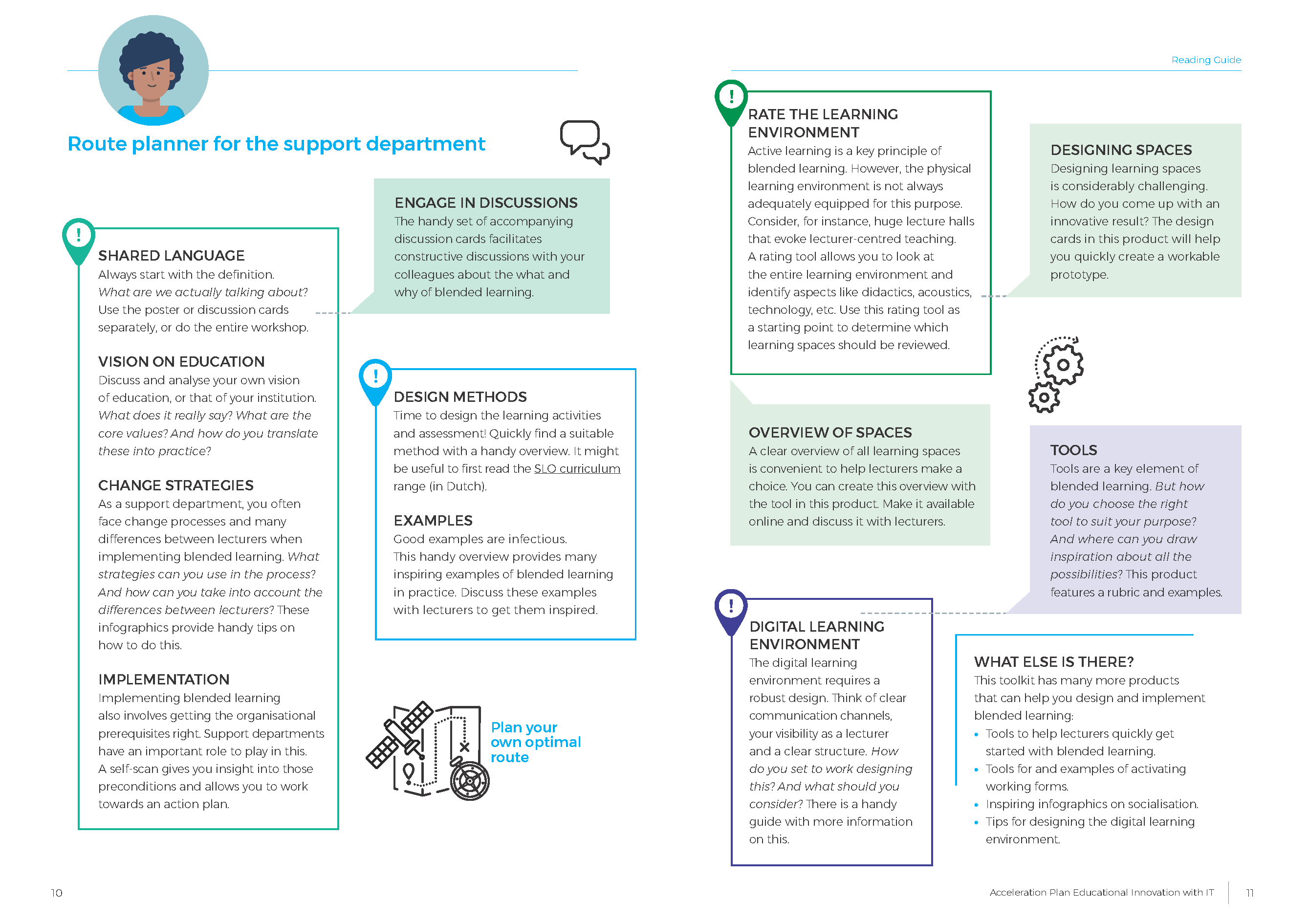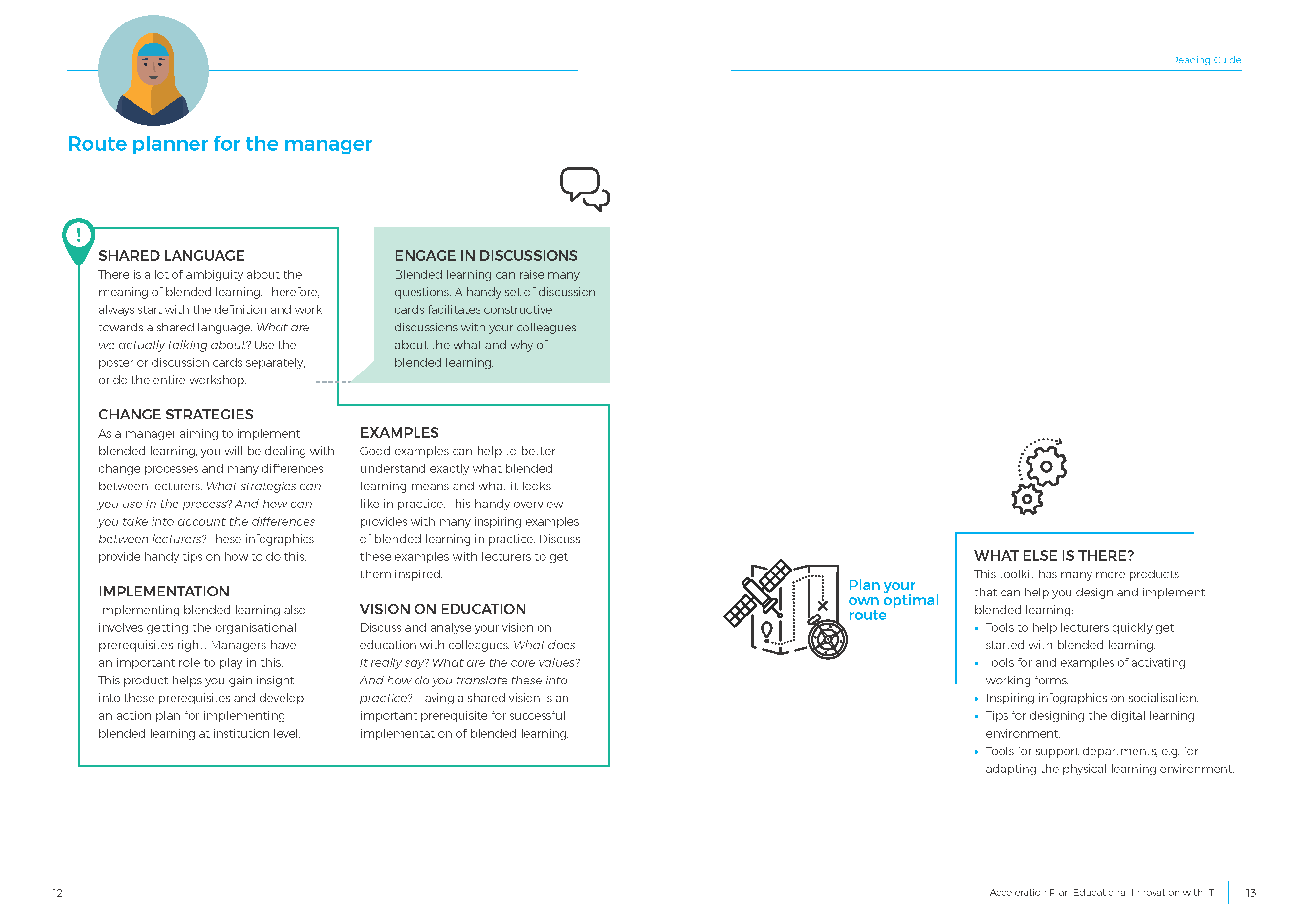
Privacy and Ethics Reference Framework for education data
Education data offers increasing opportunities to make higher education better, more effective and more efficient. In order to benefit, students
Acceleration plan | Toolkit Blend your education

Blended learning. A concept that is high on the agenda in education land. Are you working on blended learning within your institution? Then you know better than anyone else that it is a vast and complex task requiring various levels of action. A task for lecturers, but also for support staff and managers. A real team effort, in other words.
To support in this, the Facilitating professional development for lecturers zone developed the toolkit ‘Blend your education’, containing concrete handles and tools for practice – for designing and implementing blended learning. From working forms for developing a vision of blended learning to conversation cards for the activating blend.

The toolkit is designed to help you as a lecturer, support staff or manager to get off to a good start. Want to get started with the toolkit? Then download the reading guide and check out the route planners below before you get started. They will help you navigate through the toolkit.



The toolkit contains dozens of products divided into 15 topics. You can download them all at once, or start working with the products separately.
This product is designed to create shared language with lecturers (teams) around blended learning. It consists of a poster, several discussion cards and an instruction. The poster stands alone and can be hung in a team room, for example. The conversation cards are part of the workshop. Download all parts of this product via the download button below.
This product contains a concrete working form to work on a vision for education. These work forms focus on making explicit the underlying core values and how they translate into practice. Download all parts of this product via the download button below.
This product is designed to help lecturers (teams) quickly get started. The product contains three worksheets that support determining the best approach route, prioritising certain course or curriculum components and checking that all contextual factors have been considered. In addition, this product includes two additional PowerPoint worksheets. Users can thus easily prepare and elaborate their redesign. Download all parts of this product via the download button below.
Designing blended learning is a challenging task. To support lecturers (teams), several design methodologies have been developed over time. This product consists of a clear infographic set up as a table. The table lists the most common design methodologies and their characteristics. Download all parts of this product via the download button below.
The conversation cards in this product enable lecturers, managers and support staff to engage in constructive dialogue about an activating blend within a curriculum. Topics include vision and policy, leadership, professionalisation and facilities. Download all parts of this product via the download button below.
To get the work sweat on the right back, as a lecturer you need to think carefully about the work forms you are going to use. But how do you choose an appropriate working form? And what inspiring examples are there? This product contains both a step-by-step plan for devising your working form or choosing a suitable one, and an overview of inspiring examples. Download all parts of this product via the download button below.
The tool in this product is designed to score specific learning spaces according to various criteria, such as furnishing, use of colour, alignment with the educational vision and more. The tool lends itself perfectly to being used as the basis for a campus-wide vision of the physical learning environment and to what extent this is currently feasible in the available learning spaces. It provides quick insight into which aspects need improvement. Download all parts of this product via the download button below.
The digital learning environment – and especially its design – plays a key role in implementing blended learning. However, the digital learning environment is often not used to its full potential. This product, therefore, contains concrete tools to achieve a comprehensive design that encourages learning. Download all parts of this product via the download button below.
The landscape of available tools is vast. Often lecturers can no longer see the wood for the trees. In addition, it is sometimes difficult to assess whether a tool meets the requirements exactly. This product therefore offers a handy section to score tools on usability. It also includes links to useful resources. Download the instruction via the download button below.
Good examples follow. This handy overview therefore contains many inspiring examples of blended learning in practice. It also explains how to collect good examples within your own institution. Download all parts of this product via the download button below.
What should you think about when implementing blended learning at institution level? This workshop, aimed primarily at managers and support staff, provides quick insight into the preconditions involved in implementing blended learning. The workshop is designed as a discussion session using a concrete self-scan to map out your own institution. Download all parts of this product via the download button below.
There are different strategies to approach a change and/or implementation project. These talking points provide an overview of approach routes to encourage lecturers to implement blended learning. These routes are complemented by real-life examples. Download all parts of this product via the download button below.
You can download the reading guide and all products from the toolkit in one go via the button to the right.
Share this page

Education data offers increasing opportunities to make higher education better, more effective and more efficient. In order to benefit, students

How can higher education institutions develop a more efficient and accessible system for digital and open educational resources that puts

Fast to: About Challenges Information Contact Startup in Residence EdTech is a programme for educational institutions that want to collaborate

Transition agenda Getting to grips with digitalisation Digitalisation as a crowbar for the desired transition in higher education A higher
Deze website maakt gebruik van cookies. Lees hier over onze Coookies